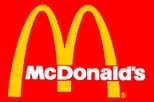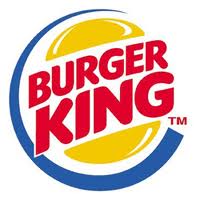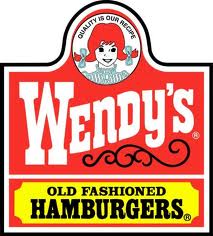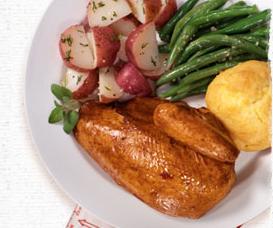by Mike Geary
Every time I feel a cold or something starting to come on, I do this ritual, strengthen my immune system, and my body always fights it off before I actually get full-blown sick.
1. Focus on Vitamin D (but NOT in pill form or “fortified” foods)
You need to be careful about artificial forms of vitamin D in many vitamin pills, as artificial vitamin forms are almost always either ineffective or possibly even detrimental compared to natural forms.
For this reason, you need to get your vitamin D naturally. The sun is the best source, and leads to a powerful strengthening of your immune system when your body can naturally produce Vitamin D from moderate sun exposure.
I know not everybody can take a tropical vacation every winter, but if you can, it’s best to try to take it right smack dab in the middle of the winter (when your vitamin D levels have dropped to their lowest)… getting even a few days of good sun closer to the equator in the middle of winter can really help increase your vitamin D and strengthen your immune system.
Remember that this does NOT mean getting burned in the sun… it means getting a moderate amount of sun on large portions of your body (not just your face) for approx 15-40 minutes per day WITHOUT sunscreen on (since sunscreen blocks the UV rays that directly stimulate the vitamin D increase in your body).
Everybody is different based on their skin tone… very pale skin tones may only need 10 minutes or so in full sun in the middle of the day to get adequate vitamin D before any skin damage occurs, but darker skin tones may need a slightly longer time (sometimes 30-40 minutes) in the sun to produce adequate vitamin D. To protect your skin, it’s essential to get enough sun without sunscreen on, but NOT get burned.
With that said, I understand that a tropical vacation in the winter is not possible for everybody’s schedule based on either work or finances, so…
Since you may not be going on a tropical vacation this winter, how can you still keep Vitamin D levels from falling dangerously low in your body?
Well, the best food sources of natural Vitamin D are egg yolks, fatty fish, organic meats, and some mushrooms (some portobella mushrooms and maitake mushroom are fairly good sources of vitamin D).
But what I do to make sure I’m at least getting a decent amount of the best absorbed vitamin D is to take a SMALL dose of cod liver oil daily in the deepest months of winter to make sure my vitamin D levels don’t fall too low. Make sure to take only small doses of cod liver oil (enough for 50% to 100% DV of vitamin D), as large doses can give you an overdose of Vitamin A. I take about half to 2/3rds of the recommended dose on the bottle.
FYI – The synthetic version of Vitamin D is ergocalciferol (vitamin D2), while the natural form is cholecalciferol (vitamin D3). By the way, fortified milk has added D2, not D3… so that’s NOT a good source. In fact, I don’t trust any “fortified” foods at all, including crappy breakfast cereals which claim to be good sources of vitamin D… not so!
2. Garlic to strengthen your immune system!
Garlic is one of the most potent of all superfoods! Not only does high dose garlic go back thousands of years for treatment of sickness, but recent studies back up the legendary claims for boosting your immune system.
What’s best though — “aged” garlic pills, whole garlic in foods, capsules, etc? I can’t seem to find a consensus on this one, so what I simply try to do is use a variety of sources, including garlic powder on a lot of my foods, fresh chopped garlic in meals, and also a garlic capsule or two each day.
If I feel a possible cold or sickness coming on, I really start loading garlic into my foods heavily and I take a few extra garlic capsules that day too.
3. Kombucha tea strengthens immune system
Kombucha tea is a fermented tea (naturally effervescent) that contains billions of friendly gut organisms (probiotics) that help to strengthen your immune system by bolstering your levels of good organisms in your gut.
Remember that 70% of your immune system lies in your gut and the health of the friendly organisms in there to protect you against pathogens and sickness.
You can find bottles of Kombucha tea at health food stores such as Whole Foods.
When I feel any sickness coming on, I start loading up on Kombucha tea, drinking it throughout the day. It has a strong taste, so I mix it with my normal iced teas at 1/3 Kombucha and 2/3 regular iced tea. I’ve started seeing other probiotic drinks on the market recently too, so just make sure to look for one that has very minimal sugar per serving (3-6 grams per 8 oz serving is acceptable, but much more than that is too sugary).
4. Green tea, Chamomile Tea, and other teas
There is evidence that green tea and chamomile tea can help aid in strengthening the immune system.
Even if the effect is small, you can’t go wrong because both are loaded with powerful antioxidants unique to each tea.
For that reason, I try to drink a couple cups of green tea with a small bit of raw honey early in the day, and then at night, I have a couple cups of chamomile tea.
This isn’t a bad idea even for a regular habit, but it’s even more important when you feel a sickness possibly coming on. I also drink a lot of other teas too such as Rooibos tea, which is thought to be even higher in antioxidants than green tea.
5. Loading up on antioxidants
We already know how important antioxidants are to overall health as well as immune system support.
For this reason, I make sure to really load up on antioxidant-rich fruits, berries, unsweetened cocoa (in smoothies, etc), and veggies to help prevent sickness.
6. Light exercise (yes – light exercise, not hard)
When you feel a sickness coming on, a super-high intensity workout is not a good idea, as hard training forces the body to do a lot of recovery, this at a time when your body needs all of it’s efforts on trying to fight off the oncoming sickness.
Although I usually recommend high intensity training, when sickness might be coming on, it’s just a good idea to get some light exercise instead.
Personally, I like to get outside for some fresh air and go for a hike or go snowshoeing. These aren’t very strenuous for me, so they won’t cause my body to be forced to do a lot of recovery… but just getting out in the fresh air and getting the circulation going I feel is good to help the body fight off the sickness.
7. Avoid ALL processed foods and sweetened soft drinks
If you’re serious about your health and getting lean for life, this should be an everyday rule for you anyway (except maybe for cheat meals)…
However, when you might have a sickness coming on, this is no time to bombard your body with processed foods, inflammatory omega-6 oils (soybean oil, corn oil, etc), fried foods, high fructose corn syrup, refined sugars, and chemical additives.
All of these force your body to do extra work to deal with all of this junk and the internal inflammation that they cause in your body.
Instead, this is a time that you need to give your body only wholesome unprocessed foods that are only 1 ingredient…fruits, berries, veggies, eggs, nuts, seeds, grass-fed meats, etc.
These 7 tips will go a LONG way to helping to ward off that sickness that is trying to get a hold of you… Here’s to a healthy strong body!
Note: I’m not a doctor, and none of these tips are prescriptions for any individual person… they are simply the steps I’ve personally used over the years to successfully fight off sickness pretty much every single time. Again, I haven’t been legitimately sick in at LEAST 6 or 7 years now that I use these steps!









